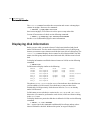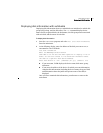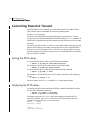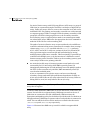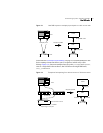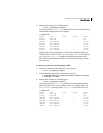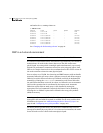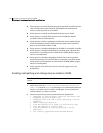
128 Administering dynamic multipathing (DMP)
How DMP works
See “Changing the disk-naming scheme” on page 91 for details of how to change
the naming scheme that VxVM uses for disk devices.
See “Discovering and configuring newly added disk devices” on page 82 for a
description of how to make newly added disk hardware known to a host system.
How DMP monitors I/O on paths
In older releases of VxVM, DMP had one kernel daemon (errord) that performed
error processing, and another (
restored) that performed path restoration
activities.
From release 5.0, DMP maintains a pool of kernel threads that are used to
perform such tasks as error processing, path restoration, statistics collection,
and SCSI request callbacks. The
vxdmpadm stat command can be used to provide
information about the threads. The names
errord and restored have been
retained for backward compatibility.
One kernel thread responds to I/O failures on a path by initiating a probe of the
host bus adapter (HBA) that corresponds to the path. Another thread then takes
the appropriate action according to the response from the HBA. The action
taken can be to retry the I/O request on the path, or to fail the path and
reschedule the I/O on an alternate path.
The restore kernel thread is woken periodically (typically every 5 minutes) to
check the health of the paths, and to resume I/O on paths that have been
restored. As some paths may suffer from intermittent failure, I/O is only
resumed on a path if has remained healthy for a given period of time (by default,
5 minutes). DMP can be configured with different policies for checking the paths
as described in “Configuring DMP path restoration policies” on page 160.
The statistics-gathering thread records the start and end time of each I/O
request, and the number of I/O failures and retries on each path. DMP can be
configured to use this information to prevent the SCSI driver being flooded by
I/O requests. This feature is known as I/O throttling.
If an I/O request relates to a mirrored volume, VxVM specifies the FAILFAST
flag. In such cases, DMP does not retry failed I/O requests on the path, and
instead marks the disks on that path as having failed.
See “Path failover mechanism” on page 128 and “I/O throttling” on page 129 for
more information about these features of DMP.
Path failover mechanism
The DMP feature of VxVM enhances system reliability when used with
multiported disk arrays. In the event of the loss of a path to a disk array, DMP
automatically selects the next available path for I/O requests without
intervention from the administrator.



